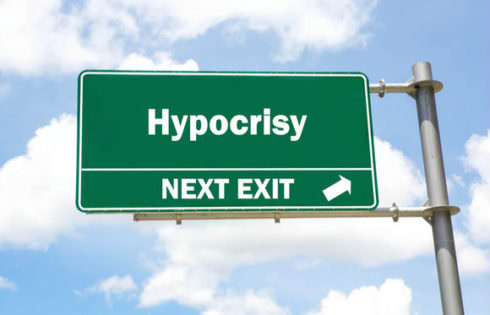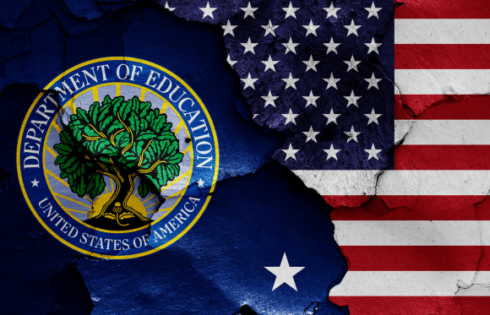
While some University of Minnesota student leaders have demanded the use of trigger warnings before teaching provocative course materials, suggesting it’s the only way to ensure a “safe campus,” other students and scholars are unsupportive of the request, and bristle at the notion of stifling the educational process.
“Trigger warnings” aim to alert students of future disturbing content. Such a warning is, supporters argue, particularly appropriate for victims of sexual assault and war veterans.
Many academics see warnings as a serious threat to academic freedom, but the school’s student government passed a resolution in October asking professors to add “trigger warnings” to course syllabi. The resolution called for alternative course materials for students with post-traumatic stress disorder.
After the vote, the Minnesota Daily campus newspaper voiced concern, saying “higher education, especially the liberal arts, is only successful when the classroom takes time to address difficult topics head-on.”
The Daily’s editorial echoed a similar piece from April declaring trigger warnings a bad idea, noting “universities are not safe houses for students, and they should not protect students from uncomfortable or emotionally provocative lessons. This student-driven proposal seeks to shield other students from duress, and though it may be well-intentioned, it has no place in a community of intellectual growth.”
Meanwhile, the faculty senate at the University of Minnesota has yet to hold a discussion on the non-binding student resolution. It remains to be seen when and if they will.
Professor Eva von Dassow, the faculty senate vice chair, told The College Fix in a recent email interview that “any requirement to add trigger warnings to syllabi immediately runs into serious problems.”
Von Dassow said she thinks the ambiguous language used in defining a “trigger” has made it “impossible to know what may trigger any of the many and various individuals taking courses.”
The resolution passed in October did not specifically address the sorts of subjects that could be “triggering.” It simply cited a portion of the student health code calling on the university to “not threaten the physical or mental health or safety of members of the university community.”
Von Dassow said a warning could limit the intellectual life of a campus and diminish the power of free inquiry.
“The imposition of strictures on the content of communication” could seriously disrupt the exchange between teacher and student, she noted, adding: “Shall we not speak of the wars in Iraq and Afghanistan, for example, or provide warnings in case we do, because students who were deployed there are likely to be afflicted by PTSD which may be triggered by the material discussed? Shall we excuse anyone who finds this history traumatic from learning about it?”
Supporters may need to answer critical questions such as these before any agreement is reached.
What’s more, the provost of the University of Minnesota, Karen Hanson, told The College Fix that the school stands behind academic freedom, saying: “no subjects are inherently off limits for inquiry.”
Moreover, “the university would not be prepared to deem some material beyond the bounds of study and inquiry,” Hanson said regarding alternative course materials for traumatized students.
But student Abeer Syedah, author of the resolution, described national criticism of trigger warnings as “overblown,” calling her resolution, “not too much to ask,” reported the Pioneer Press. A warning, according to Syedah, is a brief statement easily relayed in the classroom setting—something similar to content ratings before movies or TV shows.
At least one scholar at the University of Minnesota already uses trigger warnings. Professor Angela Carter has opened up about a past rape experience, and uses trigger warnings in her “Queering Desire” course, which delves into topics such as rape, homophobia and domestic abuse.
One student, Joey Daniewicz, created a petition urging the Minnesota Daily to retract the editorial it published in April criticizing the use of trigger warnings. But the petition, now nine months old, has only received 81 signatures.
Daniewicz, while endorsing his petition, stated that indifference to trigger warnings nurtures “the idea that college is for the elite few and should not be made accessible to the less well off.” The campus newspaper has ignored the uproar and the editorial remains published with no retraction.
In a report, the American Association of University Professors called trigger warnings “infantilizing and anti-intellectual.” The report noted that “if such topics are associated with triggers, correctly or not, they are likely to be marginalized if not avoided altogether by faculty who fear complaints for offending or discomforting some of their students.”
The Minnesota Daily has further argued trigger warnings could “give an easy out to students who want to shirk difficult assignments.”
The practice of trigger warnings is not widespread, but more and more students have requested their use in recent years.
College Fix reporter Anthony Gockowski is a student at the University of St. Thomas.
Like The College Fix on Facebook / Follow us on Twitter
IMAGE: Rob Gallop/Flickr






Please join the conversation about our stories on Facebook, Twitter, Instagram, Reddit, MeWe, Rumble, Gab, Minds and Gettr.